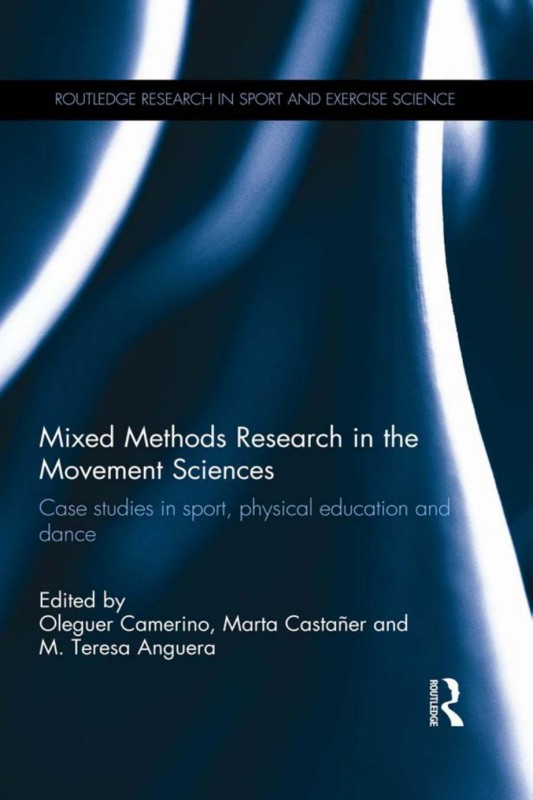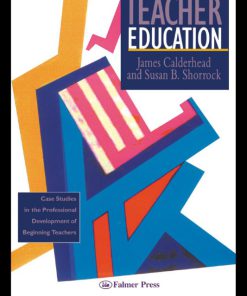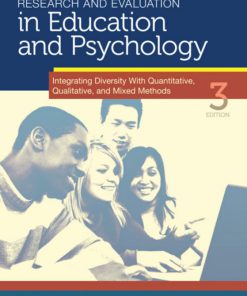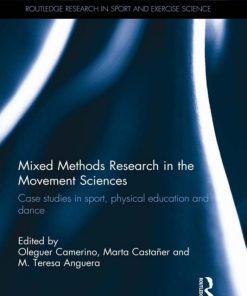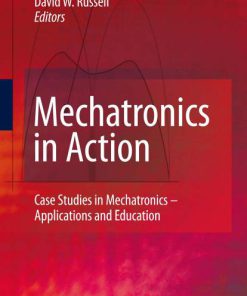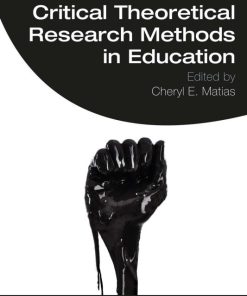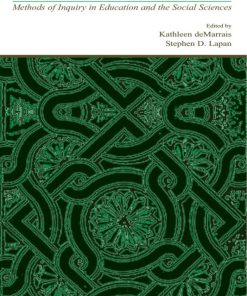Mixed Methods Research in the Movement Sciences Case Studies in Sport Physical Education and Dance 1st Edition by Oleguer Camerino, Marta Castaner, Teresa Anguera 0415532272 9780415532273
$50.00 Original price was: $50.00.$25.00Current price is: $25.00.
Authors:Oleguer Camerino; Marta Castaner; Teresa M. Anguera , Series:Education [29] , Tags:Education; Teaching; Subjects; Physical Education; Performing Arts; Dance; General; Sports & Recreation , Author sort:Camerino, Oleguer & Castaner, Marta & Anguera, Teresa M. , Ids:Google; 9780415532273 , Languages:Languages:eng , Published:Published:Mar 2014 , Publisher:Routledge , Comments:Comments:Mixed methods research techniques, combining both quantitative and qualitative elements, have become well established throughout the social, behavioural and natural sciences. This is the first book to focus on the application of mixed methods research in the movement sciences, specifically in sport, physical education and dance. Researchers and practitioners in each of these fields are concerned with the study of habitual behaviour in naturalistic contexts, and of the concurrent and sequential nature of events and states, precisely the kind of work that multi-method research design can help illuminate. The book is arranged into four sections. The first provides a thorough overview of mixed methods procedures and research design, and summarizes their applicability to the movement sciences. The remaining sections then offer detailed case studies of mixed methods research in team and individual sports (analyzing hidden patterns of play and optimising technique); kinesics and dance (analyzing motor skills behaviour in childhood, and the complexity of motor responses in dance); and physical education (detecting interaction patterns in group situations, and optimizing non-verbal communication by teachers and sports coaches). Mixed Methods Research in the Movement Sciences offers an important new tool for researchers and helps to close the gap between the analysis of expert performance and our understanding of the general principles of movement science. It is important reading for any student, researcher or professional with an interest in motor control, sport and dance pedagogy, coaching, performance analysis or decision-making in sport.
Mixed Methods Research in the Movement Sciences Case Studies in Sport Physical Education and Dance 1st Edition by Oleguer Camerino, Marta Castaner, Teresa Anguera – Ebook PDF Instant Download/Delivery. 0415532272, 9780415532273
Full download Mixed Methods Research in the Movement Sciences Case Studies in Sport Physical Education and Dance 1st Edition after payment
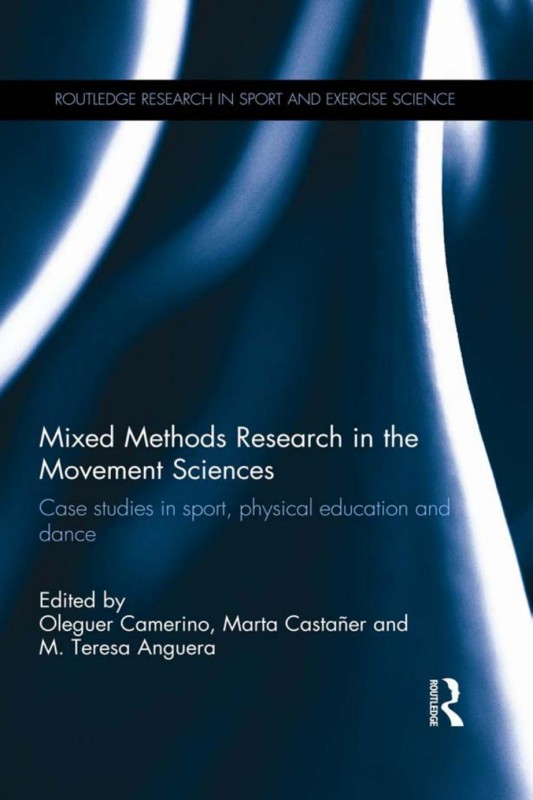
Product details:
ISBN 10: 0415532272
ISBN 13: 9780415532273
Author: Oleguer Camerino, Marta Castaner, M. Teresa Anguera
Mixed methods research techniques, combining both quantitative and qualitative elements, have become well established throughout the social, behavioural and natural sciences. This is the first book to focus on the application of mixed methods research in the movement sciences, specifically in sport, physical education and dance. Researchers and practitioners in each of these fields are concerned with the study of habitual behaviour in naturalistic contexts, and of the concurrent and sequential nature of events and states, precisely the kind of work that multi-method research design can help illuminate. The book is arranged into four sections. The first provides a thorough overview of mixed methods procedures and research design, and summarizes their applicability to the movement sciences. The remaining sections then offer detailed case studies of mixed methods research in team and individual sports (analyzing hidden patterns of play and optimising technique); kinesics and dance (analyzing motor skills behaviour in childhood, and the complexity of motor responses in dance); and physical education (detecting interaction patterns in group situations, and optimizing non-verbal communication by teachers and sports coaches). Mixed Methods Research in the Movement Sciences offers an important new tool for researchers and helps to close the gap between the analysis of expert performance and our understanding of the general principles of movement science. It is important reading for any student, researcher or professional with an interest in motor control, sport and dance pedagogy, coaching, performance analysis or decision-making in sport.
Mixed Methods Research in the Movement Sciences Case Studies in Sport Physical Education and Dance 1st Table of contents:
Part I The Mixed Methods Approach to Research
1 Mixed Methods Procedures and Designs for Research on Sport, Physical Education and Dance
Introduction
Integrating the Qualitative and the Quantitative Through Mixed Methods
Types of Mixed Methods Designs
Different Combinations of Mixed Methods Designs
Triangulation Designs
Types of Triangulation Designs
Methodological Triangulation
Variants of the Triangulation Design
Advantages and Challenges in Using the Triangulation Design
Dominant Embedded Designs
Variants of the Dominant Embedded Design
Advantages and Challenges in Using the Dominant Embedded Design
Exploratory Sequential Designs
Variants of the Exploratory Sequential Design
Advantages and Challenges in Using the Exploratory Sequential Design
Explanatory Sequential Designs
Variants of the Explanatory Sequential Design
Advantages and Challenges in Using the Explanatory Sequential Design
Advantages and Challenges Resulting from the Use of Mixed Methods
Acknowledgements
References
Part II Team and Individual Sports
2 Detecting Hidden Patterns in the Dynamics of Play in Team Sports
Case Study 2.1: Temporal Pattern Analysis and Its Applicability in Sport: Illustrative Data from an Attack Session in Rugby
Introduction
The Physical Demands of Rugby
Studies of Temporality within Sports Performance
Analysis of Temporal Patterns
Aims and the Mixed Methods Approach: Triangulation Design
Method
Results
Discussion
Conclusions
Case Study 2.2: Influence of the Use of Space on the Dynamics of Play in Basketball
Introduction
Aims and the Mixed Methods Approach: Convergent Triangulation
Observational Methods Applied to Sporting Contexts
The Observation Instrument
Procedure and Participants
Results Derived from the Detection of Temporal Patterns (t-patterns)
Results Derived from the Correspondence Analysis
Discussion
Conclusions
Case Study 2.3: The Dynamics of Play and Defensive Systems in Handball
Introduction
Aims and Mixed Methods: Explanatory Sequential Design
Instrument 1: Observation System of Organized Defensive Phase (sodmo)
Construction of the Instrument
Participants
Procedure
Results
Detecting Temporal Patterns (t-patterns)
Descriptive Analysis of the Group-stage Match between Spain and Croatia
Sequential Analysis of the Group-stage Match between Spain and Croatia
Descriptive Analysis of the Third Placement Match between Spain and Croatia
Descriptive Analysis of the First Half
Descriptive Analysis of the Second Half
Instrument 2: Retrospective Interview and Video Recordings
Results of the Retrospective Interview
Correct Understanding of Defensive Play
Justifications and Clarifications
Differences in Interpretation
Conclusions to Be Drawn from the Retrospective Interview
Discussion
Acknowledgements
Note
References
3 Optimizing Techniques and Dynamics in Individual Sports
Case Study 3.1: The Influence of Environmental Factors in the Context of Elite Fencing
Introduction
The Use of Observational Methodology in Combat Sports
Aims and the Mixed Methods Approach: Triangulation Design
Participants
Observation Instrument
Recording Instrument
Procedure
Results for Procedure 1: Descriptive Statistics
Results for Procedure 2: Lag Sequential Analysis
Discussion
Conclusions
Case Study 3.2: Errors in the Judo Throw ippon Seoi Nage AND THEIR CONSEQUENCES FOR THE LEARNING PROCESS
Introduction
Aims and the Mixed Methods Approach: Convergent Triangulation
Participants
Results
Discussion
Conclusions
Case Study 3.3: An Analysis of Effectiveness in Freestyle Swimming
Introduction
Aims and the Mixed Methods Approach: Triangulation Design
Participants
Observation Instrument
Recording Instruments
Statistical Analysis
Control of Data Quality
Results
Analysis of Quantitative Results: Performance Measures
Analysis of Qualitative Results: Technical Performance
Qualitative and Quantitative Variability in Performance
Discussion and Conclusions
Acknowledgements
References
Part III Approaches to Kinesics and Dance
4 Extending the Analysis of Motor Skills in Relation to Performance and Laterality
Case Study 4.1: How to Observe Spontaneous Motor Skills in Natural Contexts: From Children’s Playgrounds to Parkour
Introduction
Spontaneous Motor Skills
The Need for a Clear and Meaningful Analysis of Motor Skills
Aims and the Mixed Methods Approach: Exploratory Sequential Design
Instrument 1: The Osmos Observational System
Instrument 2: Guided Interview
Results
Motor Skills Specific to Parkour
Motor Skills Which Are Common to Parkour and Playgrounds
Discussion
Conclusion
Case Study 4.2: The Laterality of Motor Skills: A Complex Merging of Postural Support and Gestural Precision
Introduction
Laterality and Spatial Orientation
Postural Support and Gestural Precision
Aims and the Mixed Methods Approach: Embedded Design
Instrument 1: Instrument for Recording Motor Laterality (latmo)
Participants
Procedure
Basic Motor Skills
Specific Motor Skills
Results
Instrument 2: Discussion Group
Participants
Procedure
Results
Instrument 3: Dynamic-latmo
Participants
Procedure
Results
Correlational Analysis
Cluster Analysis
Discussion
Conclusions
Acknowledgements
Note
References
5 Appraising Choreographic Creativity, Aesthetics and the Complexity of Motor Responses in Dance
Case Study 5.1: How to Analyse Dance Choreographies: An Illustration Through Contemporary Works of Pina Bausch and Maurice Béjart
Introduction
Observing Dance
Dance as a Language
Aims of the Case Study and the Mixed Methods Approach: Multilevel Triangulation
Instrument 1: Semantic Differential
Participants and Procedure
Results and Discussion
Ravel’s Boléro
The Rite of Spring
Instrument 2: Content Analysis of Interviews with Experts
Procedure
Results
For Ravel’s Boléro
The Rite of Spring
Instrument 3: Osmos-dance: Observational System of Motor Skills Specific to Dance
Procedure
Results
Discussion
Conclusion
Case Study 5.2: A Study of Motor Creativity when Dancing Contact Improvisation
Introduction
Aims of the Case Study and the Mixed Methods Design: Triangulation
Instrument 1: Observational System
Participants and Procedure
Results
Instrument 2: Analysis of Interviews
Results
Discussion
Case Study 5.3: The Aesthetic Appraisal of Contemporary Dance Using a Motion Capture System
Introduction
The Ephemerality of Dance
Aesthetics and Contemporary Dance
Aims and the Mixed Methods Approach: Embedded Correlational Design
Instrument 1: Motion Capture
Participants and Procedure
Instrument 2: Semantic Differential
Procedure
Results
Instrument 3: Open-ended Questions
Procedure
Results
Discussion
Conclusions
Acknowledgements
References
Part IV Assessing Coaches, Teachers and Instructors
6 Optimizing Verbal and Nonverbal Communication in Physical Education Teachers, Fitness Instructors and Sport Coaches
Case Study 6.1: Identifying and Optimizing Nonverbal Communicative Styles in Physical Education Teachers
Introduction
The Singular Nature of Nonverbal Communication
From Kine to Gesture
Aims of the Case Study and the Mixed Methods Approach: An Explanatory Sequential Design
Instrument 1: Socin and Soprox Observational Systems
Participants and Procedure
Results
Instrument 2: Group Discussion
Participants and Procedure
Results
Gesture Frequencies
Iconically Defined Gestures
The Regulatory Function
Emblem Gestures
Proxemic Behaviours
Relationship between Kinesic and Proxemic Behaviours
Discussion
Conclusion
The Use of Gestures and Space by Pe Teachers
How Is the Function of Gestures Combined with the Use of Space?
Clear and Manageable Observational Systems
Case Study 6.2: Coaches’ Communication in Competitive Match Situations
Introduction
Aims and the Mixed Methods Approach: A Triangulation Validating Quantitative Data Design
Instrument 1: Socop-coach Observational System
Procedure
Results
Instrument 2: Open-ended Survey
Participants and Procedure
Results
Regarding the Criteria of Verbal Communication
Regarding the Criteria of Nonverbal Communication
Discussion
Conclusion
Case Study 6.3: The Behaviour of Fitness Instructors and the Preferences and Satisfaction Levels of Users
Introduction
Aims and the Mixed Methods Approach: A Multilevel Triangulation Design
Participants
Instruments
Instrument 1: Socif – Group Classes
Instrument 2: Quecif – Group Classes
Instrument 3: Question about Overall Satisfaction
Instrument 4: Questions about Users’ Preferences
Procedure
Results
Discussion
Observed Behaviour of Instructors
Users’ Preferences regarding Instructors’ Behaviour
Relationship between Users’ Perceptions and Preferences and the Observed Behaviour of Instructors
Relationship between Overall Satisfaction and the Observed Behaviour of Instructors
Relationship between Overall Satisfaction and Users’ Specific Satisfaction
Conclusions
Acknowledgements
Notes
References
Summary
Substantive Research in Different Fields
The Mixed Methods Designs Used
Instruments and Techniques for Gathering Data
People also search for Mixed Methods Research in the Movement Sciences Case Studies in Sport Physical Education and Dance 1st:
mixed methods case study research
mixed methods case study
mixed methods multiple case study
mixed methods case study design

